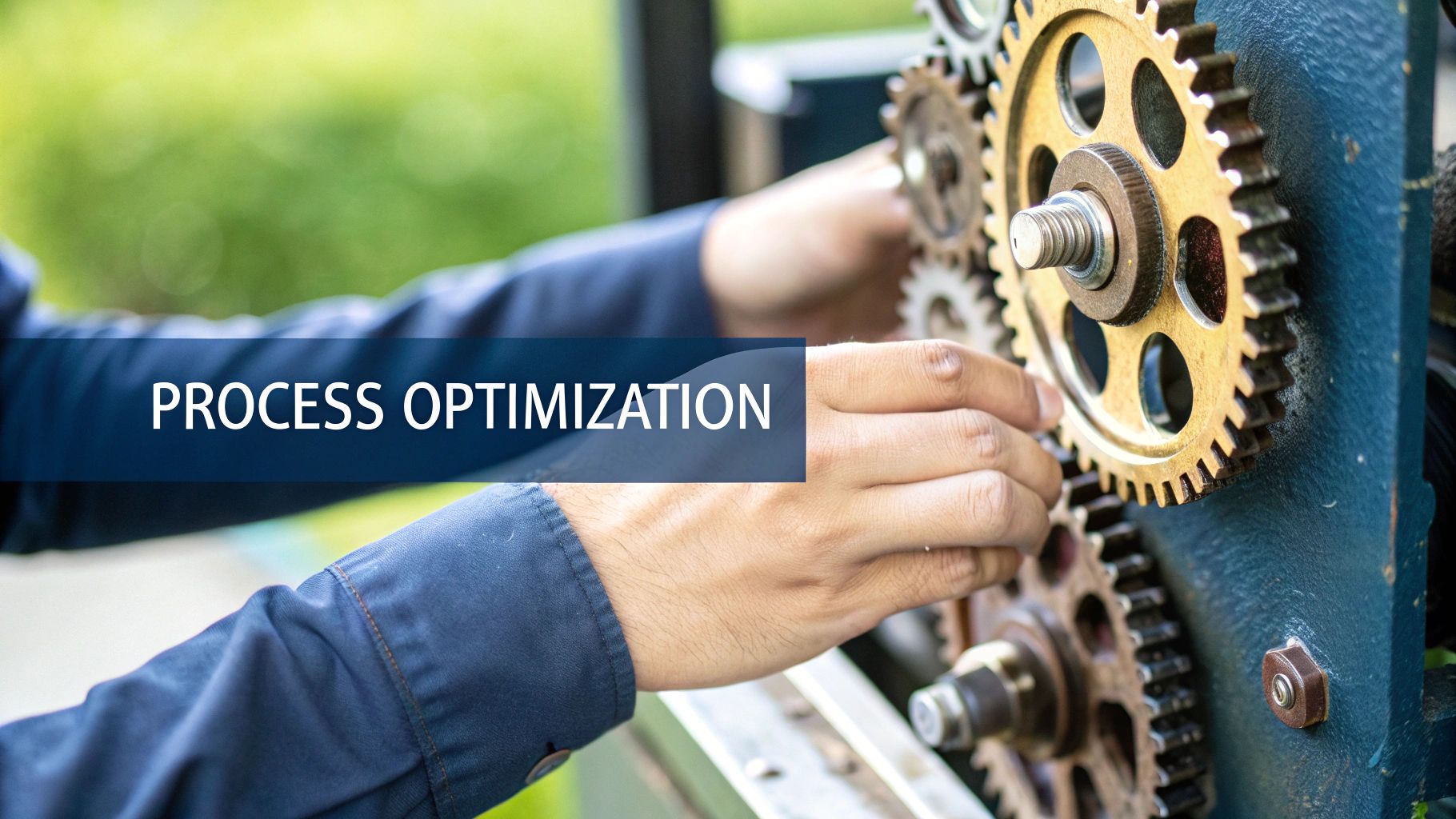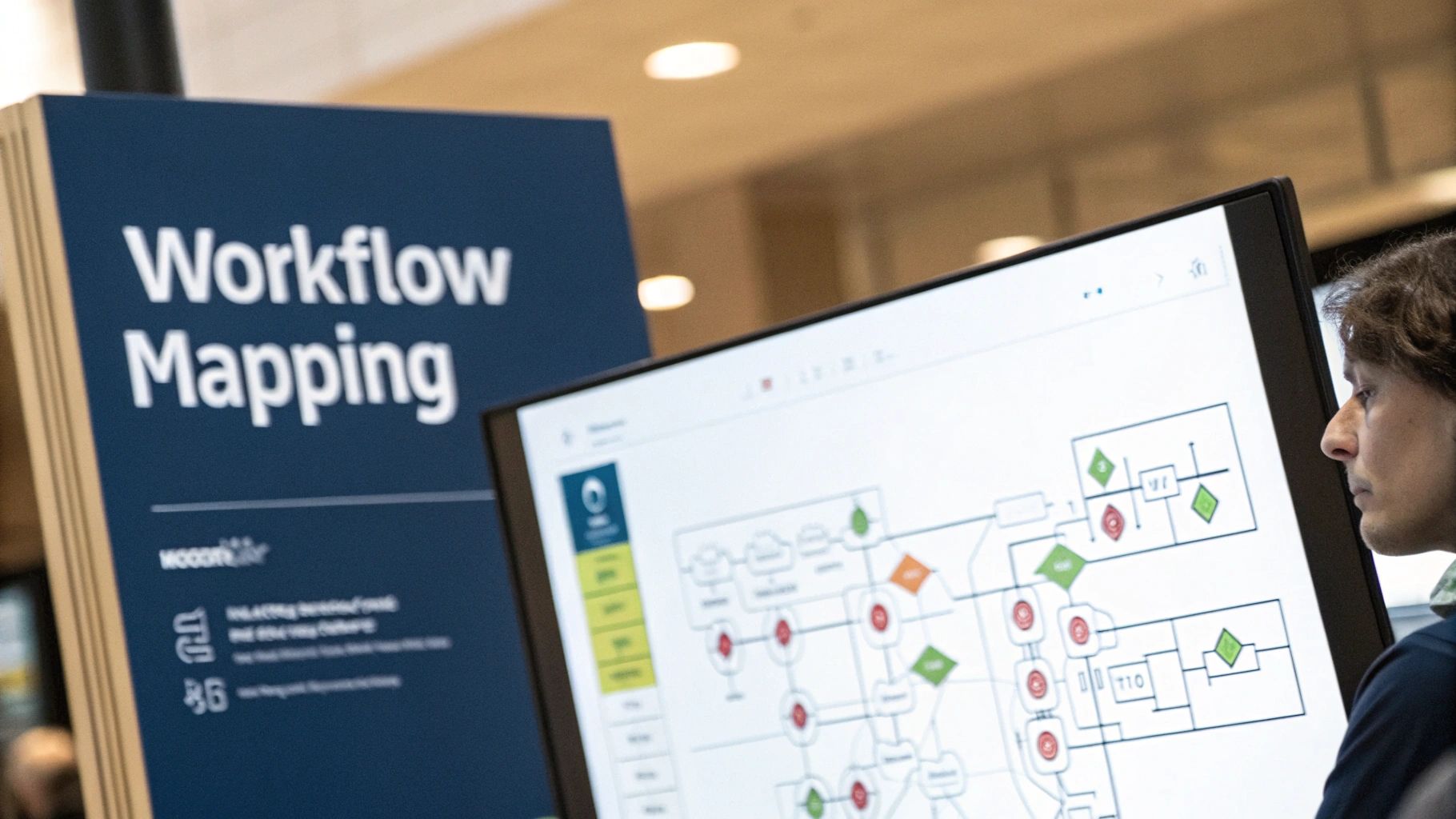Understanding Why Change Initiatives Really Fail
Most organizations struggle with implementing change, even with careful planning and good intentions. Let's explore why these initiatives so often miss their mark, and what we can do about it.
Common Pitfalls in Change Management
Poor communication tops the list of reasons why change efforts fail. Simply announcing changes isn't enough - employees need ongoing, clear updates about what's happening, why it matters, and how it benefits them. When staff feel left in the dark or excluded from the process, they're more likely to resist the changes.
Planning is another critical area where many organizations fall short. A solid change management plan must include three key elements: an honest assessment of the current situation, a clear vision of the desired outcome, and detailed steps to bridge that gap. Think of it like building a house - you wouldn't start construction without blueprints, and the same principle applies to organizational change.
Resistance to change is natural and needs to be addressed head-on. Smart organizations tackle this by:
- Understanding why people are resistant
- Providing proper training and support
- Celebrating early wins to build momentum
- Keeping open lines of communication
The numbers tell a sobering story about change initiatives. Research shows that 70% of change efforts don't achieve their goals. Only about one-third of major changes fully succeed, and 50% of leaders aren't sure if their recent changes made a positive impact. For more details, check out these change management statistics.
Building a Foundation for Lasting Change
To increase the odds of success, organizations need a thorough approach that covers all bases - from initial planning through final implementation and review. This requires:
- Strong leaders who can clearly explain the vision
- Active involvement from employees at every level
- Open and honest communication channels
- Adequate resources and support systems
The key is moving beyond theory to practical application. When organizations understand common failure points, they can take specific steps to avoid them. This means being proactive rather than reactive, and ensuring everyone has the tools and support they need to embrace the changes ahead.
Choosing the Right Change Management Model for Your Reality
Selecting a change management model is more art than science. Just as a smart investor diversifies their portfolio, smart leaders pick and mix elements from different change frameworks to match their unique situation.
Assessing Your Needs and Resources
Start by taking an honest look at your organization. What exactly are you trying to change? What tools and people do you have available? How do your employees typically respond to change? These basic questions help determine which methods will work best. For example, if you're doing a major company restructuring, Kotter's 8-step model might be perfect. But for a small team adopting new software, the ADKAR model's focus on individual readiness could be more effective.
Combining the Best of Different Worlds
Most successful organizations don't stick to just one change model. They take useful pieces from different approaches and blend them together. Think of it like cooking - you might combine ingredients from different recipes to create something that works better for your taste. For instance, you could pair the emotional support focus of Bridges' Transition Model with Kotter's practical steps. This gives you both psychological and operational tools for change. Want to dive deeper into how different models compare? Check out this research here.
Considering Cultural Context
Your company culture shapes how changes need to be managed. A top-down organization needs different tactics than one built on collaboration. For example, if your team tends to avoid risk, focus your message on how the change will create stability rather than just highlighting potential benefits.
Practical Considerations: Change Capability and Constraints
Look carefully at your organization's change capability - how good are you at actually making changes stick? Be honest about your limits too, whether they're budget, time, or people-related. The best change plan is one you can actually carry out with what you have. Think of it like planning a trip - you need to know both your destination and your resources before choosing the best route.

Implementing Change That Actually Sticks
Building lasting organizational change is a challenging task that requires equal parts careful planning and great execution. Success depends on more than just announcing new initiatives - you need to actively guide the transition, handle resistance effectively, and make new practices part of your company's DNA.
Practical Approaches for Making Change Last
Start by helping people understand the real need for change - not through fear, but by clearly showing both the risks of staying the same and the benefits of moving forward. Be specific about how the changes will positively impact daily work.
Small wins early in the process can build powerful momentum. When people see tangible results, even modest ones, they're more likely to embrace bigger changes. For example, test new systems with a small pilot team first and celebrate their success before expanding company-wide.
Pay attention to resistance, but don't automatically view it as negative. Often, those who push back have valuable insights about potential problems. Listen carefully to concerns, address them openly, and get resistant team members involved in shaping solutions. This approach can turn skeptics into supporters.
Scaling Change Across the Organization
When rolling out changes to different departments, adapt your approach for each team's specific needs. The way you train the marketing team on a new CRM system should look different from how you work with sales staff.
Keep communication flowing throughout the process. Regular updates, open Q&A sessions, and clear feedback channels help everyone stay informed and engaged. Being transparent builds trust and reduces uncertainty - two critical factors for successful change.
The choice of change management method makes a real difference in results. For example, Microsoft saw a 450% boost in adoption rates after using the Prosci Methodology. This approach was key to their successful 2023 launch of MSX Insights. Research shows that 80% of organizations using Prosci's methods reported higher adoption rates, with half achieving faster implementation. Learn more about these results here.
Embedding New Behaviors
For changes to become permanent, they must become part of your organization's core practices. Build new behaviors into performance reviews, recognition systems, and everyday workflows. When the new way becomes "just how we do things here," you've achieved real transformation. Regular reinforcement helps distinguish successful long-term changes from temporary fixes. Active transition management, thoughtful handling of resistance, and consistent celebration of progress all contribute to making changes that truly last.
Measuring What Really Matters in Change Management

Measuring success in change management requires looking beyond basic metrics and checkboxes. Organizations need to examine both hard numbers and human factors to get the full picture of how well changes are working.
Getting the Right Mix of Data
Numbers tell part of the story through metrics like return on investment (ROI), efficiency gains, and cost reductions. But numbers alone miss important human elements. Employee feedback and customer satisfaction surveys provide crucial context about how people experience and adapt to changes. Together, these paint a complete picture of what's working and what needs adjustment.
Setting Clear Success Metrics
The best key performance indicators (KPIs) connect directly to business goals while measuring both results and behavior changes. Take adoption rate as an example: If 35 out of 50 employees fully embrace a new process, that's a 70% adoption rate. Tracking these numbers over time shows whether changes are sticking Find more detailed statistics here.
Watching How Behaviors Shift
Real change happens when people adjust their daily work habits and interactions. Observing these shifts reveals whether new approaches are becoming part of the workplace culture. Regular check-ins and feedback help leaders understand employee perspectives and make needed tweaks.
Using Simple Measurement Tools
Organizations need clear ways to track both quick wins and lasting impact. The Lewin's Change Model breaks this down into three steps: "Unfreeze" old ways, make changes, and "Refreeze" new behaviors. Regular check-ins ensure improvements stick and stay relevant as needs evolve.
Making Smart Adjustments
Current data helps organizations fine-tune their approach throughout the change process. For example, if people aren't adopting new methods as expected, leaders can quickly spot trouble areas and provide extra support. This flexible approach helps maintain momentum and leads to lasting positive changes.
By focusing on meaningful metrics in change management, organizations build systems that measure what matters, encourage participation, support ongoing improvements, and create lasting positive impact.
Building a Change-Ready Organization

Success in managing change isn't about avoiding it - it's about creating an organization that welcomes and grows from it. This requires strong leadership, effective communication networks, and a mindset focused on constant growth.
Developing Change Leadership at All Levels
Real leadership during change needs to happen everywhere, not just in executive offices. Organizations should empower people at every level to become change champions - team members who guide and motivate others through transitions. These champions need practical skills in communicating change clearly, handling concerns, and recognizing progress.
Creating an environment of psychological safety makes a huge difference. When people feel safe to take risks, try new approaches, and voice concerns without fear, they're more likely to see change as an opportunity for growth. Teams also need clear guidance and backing throughout the process. You might be interested in: How to master...
Creating Effective Change Networks
Changes work better when people work together. Strong change networks connect employees across different teams who are actively implementing new initiatives. These connections create natural channels for sharing what works, solving problems together, and building shared ownership of the changes.
For instance, when launching a new product, a team mixing marketing, engineering and sales can coordinate better through a dedicated change network. These networks also provide vital feedback from people directly involved in the changes, helping catch issues early and adjust plans as needed.
Building a Culture That Embraces Continuous Improvement
Organizations that handle change well see it as an ongoing journey rather than single events. This means creating a culture where trying new things and learning from results becomes normal. The focus shifts from avoiding mistakes to gaining insights from them.
Making this real means weaving change management into daily work. Teams can evaluate how changes might affect their projects, set up regular check-ins for feedback, and celebrate both successes and valuable lessons learned. Training programs should help people build key skills like flexibility, problem-solving, and clear communication.
This dedication to constant learning helps organizations spot and respond to market shifts, new technologies, and changing customer needs early. It turns change from a disruption into a natural part of getting better and growing stronger.
Future-Proofing Your Change Management Approach

Looking ahead is essential when discussing change management methods. Organizations need to stay nimble as business conditions shift. This means keeping an eye on new developments while maintaining a solid but flexible framework.
Key Trends Shaping Change Management
The field of change management continues to advance in meaningful ways. AI analytics now helps leaders spot resistance early by analyzing employee sentiment data. We're also seeing more emphasis on adaptable leadership - where managers adjust their approach based on real-time feedback.
Consider a company rolling out new software: AI tools could scan internal communications to identify concerns before they become problems. This allows for quick course corrections when needed.
Modern Change Management Approaches
Smart organizations focus on building resilient teams that embrace ongoing adaptation. They encourage calculated risks and view setbacks as learning opportunities. Many also invest heavily in skill development so their people can tackle whatever changes come next.
Take remote work, for example. Companies now use digital tools to keep scattered teams connected and engaged during major transitions. The key is finding ways to maintain unity even when people aren't in the same location.
Creating a Flexible Framework
Your change management process should provide clear direction while allowing room to adapt. Think of it as a roadmap that offers multiple routes to the destination.
Regular check-ins with employees help gauge how changes are landing in real-time. Cross-functional teams with diverse viewpoints can spot potential issues early. Together, these practices let you stay structured while remaining responsive.
Practical Steps Forward
Here's how to prepare your organization for what's next:
- Use Data Wisely: Implement tools to measure change progress
- Build Learning Culture: Make it safe to experiment and learn
- Develop Change Leaders: Train people at all levels to guide others
- Enable Clear Communication: Create channels that work for all team setups
- Focus on Skills: Help people build capabilities for future changes
These steps help create an organization ready to tackle changes head-on. When you combine solid methods with built-in flexibility, you're better equipped for whatever comes next.
Want to learn more about managing change effectively? The Covered Call Podcast offers practical insights for navigating transitions successfully. Give it a listen to expand your change management toolkit.

